How to Waterproof a Dog House | 5 Foolproof Ideas That Work
Dogs love spending time outdoors. They could spend the whole day running and playing fetch if they were allowed to. For dogs like that, building an outdoor dog house where they can rest and relax after a long day of playing almost becomes a necessity.
Moreover, it offers them a safe place where they can get shelter from inclement weather, specifically rain, hail, and snow. But how do you ensure your dog house is ready to combat the elements?
Waterproofing! But how does one learn how to waterproof a dog house?
Well, waterproofing essentially means placing a barrier that prevents water from penetrating through the surfaces of the house. That barrier can be a layer of paint, sealant, or even heavy-duty tar paper.
Want to know more? Follow along as we take you through 5 foolproof ideas for waterproofing a dog house in the guide below.
Table of Contents
5 Foolproof Ideas For Waterproofing Your Dog House
Wood is the best material you can use for building your dog house. It’s durable, long-lasting, and easy to work with. To add to that, it’s quite easy to waterproof in a number of different ways. Let’s discuss some of those ways, 5 to be exact, in the list below.
Use Tar Paper to Seal Off The Roof
Wondering how to make a dog house waterproof? Start with the roof first. Leaky roofs can lead rainwater right into your dog’s inner sanctuary.
There’s a bunch of materials you could use to waterproof the roof of your dog house.
Tar paper, for example, is a great heavy-duty material that prevents moisture from seeping through any surface that it’s applied to.
You can install tar paper on the outer side of the roof using staples or short roofing nails. Just make sure the nails don’t go through to the inside of the house, as that could lead to your dog accidentally scratching their head against them. Injuring themselves in the process.
Shingle the Roof for Extra Protection

Tar paper works well enough when it’s up against rain alone. However, to protect the roof from damage and water seepage during hail and snow, you may need to shingle the roof for some extra safety.
Roof shingles complement tar paper brilliantly while also protecting the roof from the impact of hail, snow, and rain. Plus, they can last for over 20 years, making them the premium option for waterproofing your dog’s house in the long term.
Use Liquid Rubber Sealant
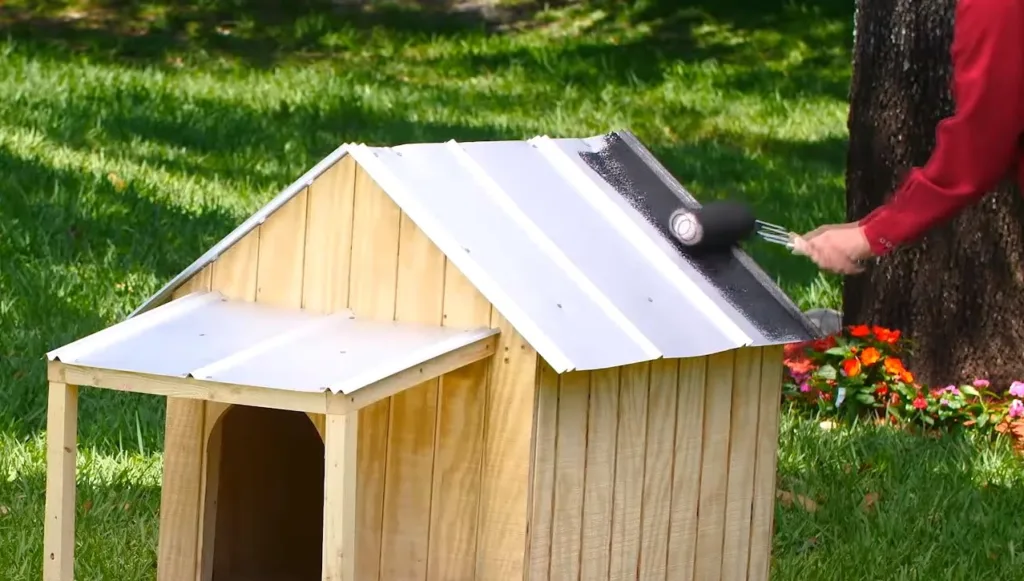
For all its merits, installing tar paper can be dangerous. Plus, the heavy-duty material may be difficult to get a hold of on the open market. In cases like that, the next best option becomes using a liquid rubber sealant.
This water-based sealant is safe to apply on both indoor surfaces and outdoor surfaces and won’t cause any harm to your dog. More importantly, it is significantly easy to apply if you have an understanding of how to apply paint.
Use a brush or roller to apply each coat on the outside of the roof. Wait 24 hours for each coat to dry and 48 hours for the entire sealant to dry before you let your dog back into his home.
Apply a Sealant to Waterproof the Sides of the Dog House
Once the roof is taken care of, divert your attention to the side walls of your dog house. Water can often seep through the holes in the paneling or the connecting edges of the walls.
Thus, it is your responsibility to seal these holes up with a sealant to ensure that water can’t interrupt your pup’s peaceful nap.
There are plenty of sealant options available in the market at the moment, with some being the kind you spray and others a liquid that you apply using a roller or a brush.
Just make sure whichever dog house sealant you buy is environmentally friendly and doesn’t give off any fumes that could hurt your pup. Also, try to buy a water-based sealant, as they’re the easiest to apply.
Paint The Roof and Wood Panels
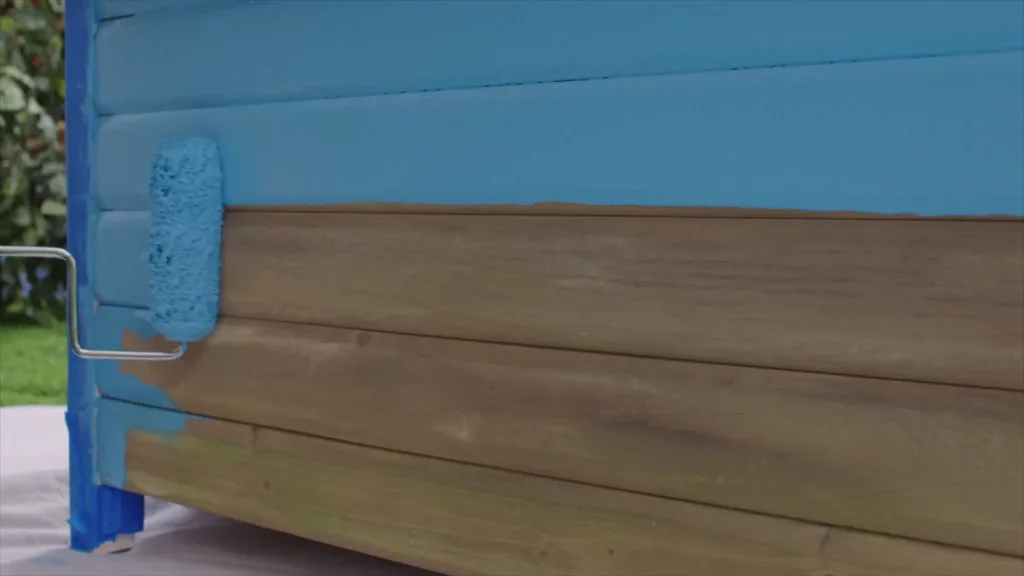
Another option you could go for is painting the roof and wood panels of your dog house. Paint designed for outdoor use is usually mildew-resistant and water-resistant.
Additionally, it offers a high degree of protection to the wood from the sun, ensuring that the wood doesn’t fade in time due to prolonged exposure.
Paint is also more readily available than sealants; hence, it’s bound to be less expensive. The only drawback is that a coat of paint has a shorter life than that of a sealant. Thus, it may require reapplication quicker than a sealant would.
And that brings our list of ideas on how to waterproof a dog house to an end. Decided on a favorite yet? If so, then let us know in the comments below.
Dog House Waterproofing Summary
Setting up a DIY waterproof dog house can often be tiring due to all the hard work involved. However, at the end of the day, it will save you money, especially during these times when labor costs are at an all-time high.
To help you out a bit, let us summarize the process once again. You’ll start with waterproofing the roof using tar paper and roof shingles or just plain sealant.
Next, you’ll tackle the walls of the house, spraying or applying liquid sealant to the holes and edges of each wall to stop the water from getting through.
You also have the option of using paint designed for outdoor use to waterproof the entire dog house.
How to Paint a Wood Dog House?
We now know that paint can be an effective waterproofing solution for your dog house. However, there’s still the matter of learning how to apply it. The method itself depends upon the tools you’re using.
You could go at it with a brush or roller and apply even coatings to each panel individually. With that said, using a brush or roller will require plenty of effort and could take up a lot of your time.
So, what’s the alternative? We’d suggest using an airless spray to spray the paint on the sidings quickly. The brush or roller then comes into play to spread and apply the paint evenly to each siding.
Not only will this process save you time, but it will also ensure full coverage of all the holes in each panel.
What Type of Stain Should You Use For Your Wooden Dog House?
There are basically two kinds of stains that work well with a wooden dog house:
- Finishing Wood Stain
- Outdoor Wood Stain
Finishing wood stain is usually richer and more durable against scratches and nicks, which is why it’s preferred for indoor furniture.
However, we personally prefer using outdoor wood stain for our dog houses as it retains the natural color of the wood after application.
Plus, this kind of stain was specifically designed to be applied to outdoor decks, siding, and fences because of how well it holds up against inclement weather and moisture.
How to Ensure That Your Wooden Dog House is Watertight
While applying paints and sealants can reduce the seepage of water into your dog’s home, it’s mighty important for you to ensure that your dog house is watertight even before you apply any extra barrier of protection.
Now, there are a couple of ways in which you can do that, and they don’t involve applying extra layers of paint, stain, or sealant to the outer panels of your dog house.
Ensure That The Construction is Rock Solid
Now, hear us out for a moment. We know constructing a DIY dog house that is weatherproof can feel rewarding, but you might actually be better off hiring experts for the job.
A professional dog house construction crew can ensure your dog house is watertight by ticking off a few requirements you may be unaware of. These requirements include:
- Flush sidings, from corner to corner.
- Installing a roof that properly overlaps all the edges of the house.
- Proper installation of windows, thereby ensuring that there are no gaps through which water could enter.
- Proper installment of doors that leave no space open when closed shut.
Now, there is a possibility that you might be a skilled worker yourself. In this case, you could probably construct a watertight dog house on your own.
However, if you have even a little bit of doubt in your abilities, then we’d recommend you leave it to the professionals.
Fill in Gaps as They Appear
Contrary to popular belief, no matter how perfect the construction of the house is, gaps can still develop within the panels as time progresses.
This is majorly due to the expanding and contracting nature of wood itself. The appearance of those gaps naturally leads to water seeping into the house.
The only thing you can do in this scenario is to plug up those gaps using either a can of spray foam or a silicone sealant.
Both of these points are essential in understanding how to waterproof a dog house in the long run.
Finding a Safe Corner for The Dog House

Before you can even think about how to build a waterproof dog house, you must decide on where you’re going to place it. Ideally, your pup’s house should be located somewhere secluded in your backyard or garden.
We’d advise picking a corner of the yard that isn’t close to any of the main pathways leading into the yard, especially if it snows in your part of the world.
Accumulated snow often has to be removed with a shovel and can oftentimes land on your dog’s house or close to it. You’ll also want to place your dog house away from any poisonous plants, as his curious nature might lead him to ingest some of them.
There are some other factors as well you need to be wary of, but these are the most important. So, keep them in mind when selecting a place for your dog house.
FAQs
How do you create a waterproof dog kennel floor?
Learning how to waterproof a wood dog house entails creating an impenetrable dog house floor. There are many ways you could go about it, but the one we recommend involves coating the floor with an epoxy-type resin coating.
These types of resin coatings are readily available in almost every marketplace. Just search for washdown epoxy floor coatings, and you should find several different types of them, all from different manufacturers.
Is Rain and Getting Wet a Bad Thing for Your Pooch?
Yes, exposure to too much rain can sometimes significantly affect your dog’s health.
The water itself won’t directly affect him, but it can increase the risk of bacterial growth and infections, which might affect them if they have an underlying condition or a compromised immune system.
Is it Okay to Take Your Pooch Outside to Do Its Business While It’s Raining?
Yes, in normal cases, it is perfectly fine to take your dog outside for peeing and pooping. Just make sure to fully dry them when you return to the house, as the existence of water can promote bacterial growth and infection.
Does Your Dog House Need a Concrete Foundation?
Yes, your dog house will need a concrete foundation for one significant reason: Concrete is one of the few materials dogs can’t chew through, which makes it an ideal foundation material for your dog house.
Can You Leave Your Dog Out in the Winter?
Dogs are incredibly resistant to cold weather, more so than humans. Thus, you can keep them outside on regular winter days.
However, you must bring them in as soon as the temperature starts dropping below the freezing point, as dogs, too, can fall victim to frostbite and hypothermia.
What is the Best Material for a Dog house?
A major aspect of learning how to keep rain out of the dog house is figuring out the best material for its construction.
We personally believe wood is the best choice due to its durability, insulating ability, and workability. Plus, with wood, you have the option of choosing from a number of different types that all have their own specialty.
How Do You Weatherize a Dog House?
Weatherizing a dog house is actually pretty simple. One way is to insulate the inside by lining it with materials like straw, hay, or aluminum foil bubble insulation.
These materials will trap the dog’s body heat, keeping him warm for longer. Another method is to fill the gaps outside the house using foam or silicone sealant to ensure that no cold air or water can find its way inside.
Waterproofing: Is it Necessary to Maintain Your Dog’s Health?
That brings us to the end of our guide on how to waterproof a dog house. To summarize once again, dog house weatherproofing entails applying an impenetrable barrier around the entire surface of the house.
This barrier can take the form of a layer of sealant or waterproof paint spread evenly across the house and plugging up all the holes water can get through.
But is this barrier truly necessary? Is waterproofing actually necessary? There have been plenty of conflicting opinions on the topic, with some believing that it’s not required at all.
And while we do admit that dogs have the ability to dry themselves off pretty quickly, having water consistently pour into their house can be bad for them.
It promotes the growth of bacteria and can even cause diseases if their immune system is compromised. Thus, our verdict is that waterproofing is quite necessary for an outdoor dog house.
As always, if you liked this guide, make sure to check out some of our other posts for more enriching content. Have a splendid day!

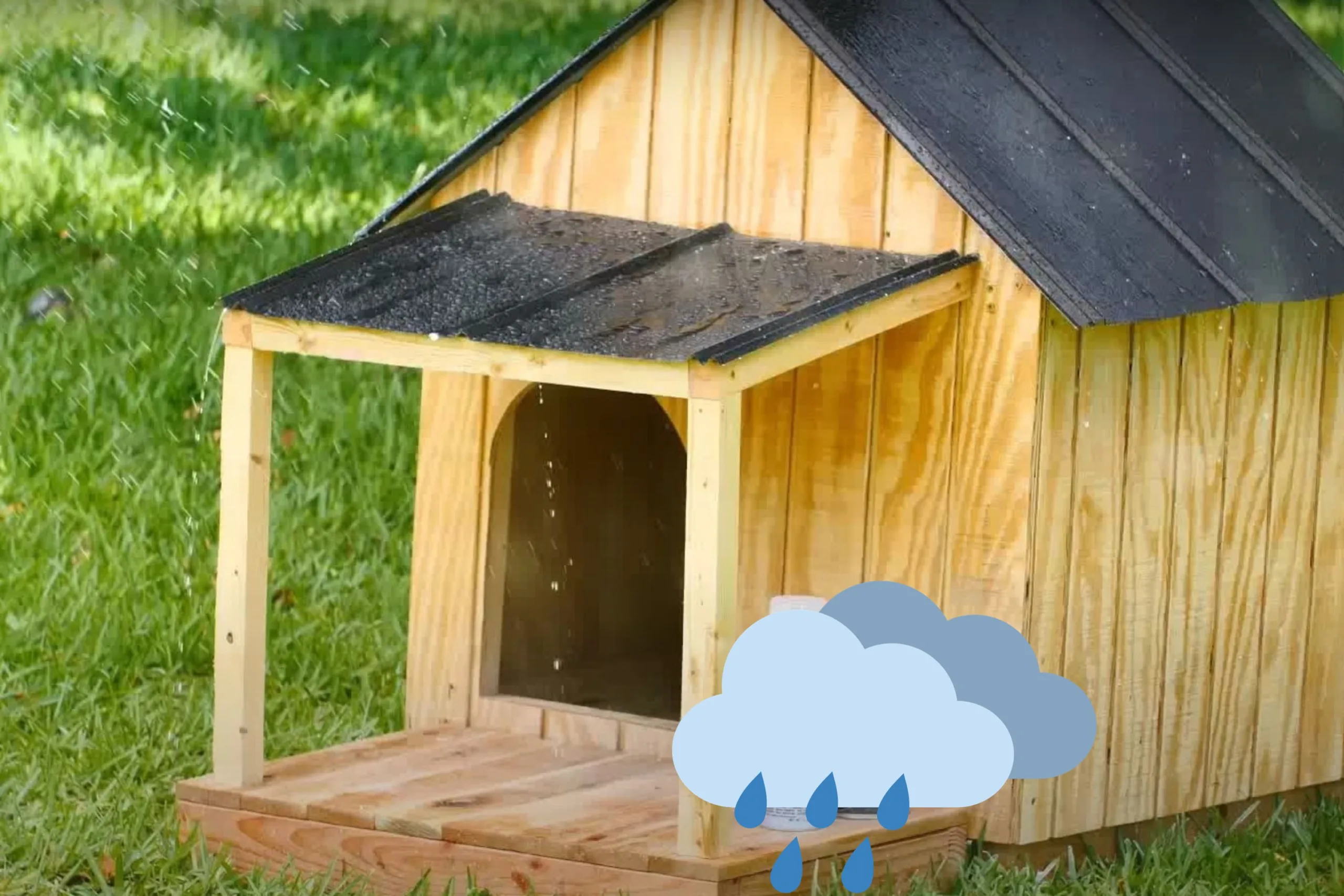
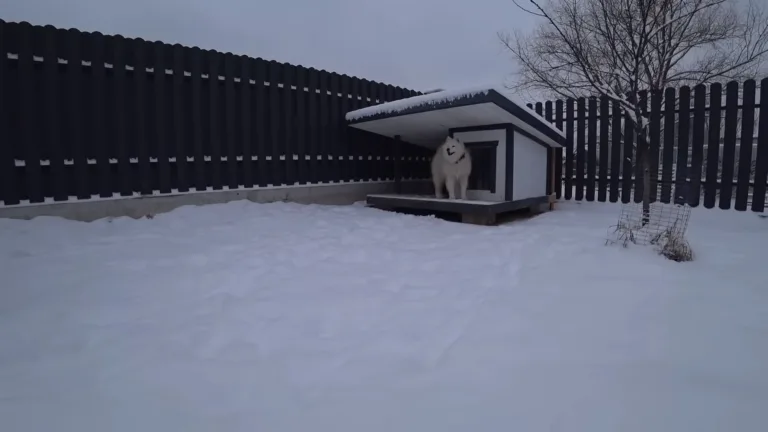
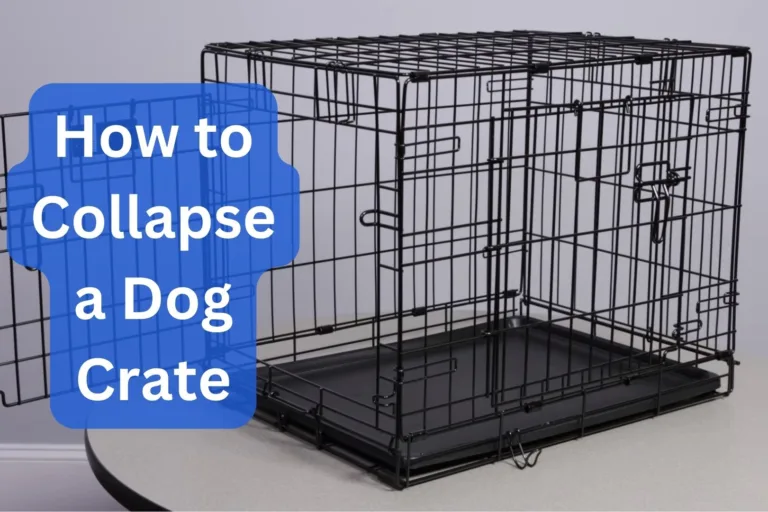
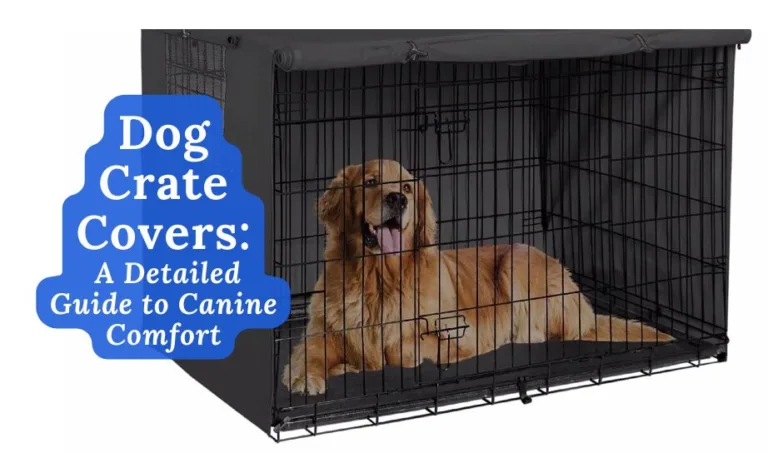


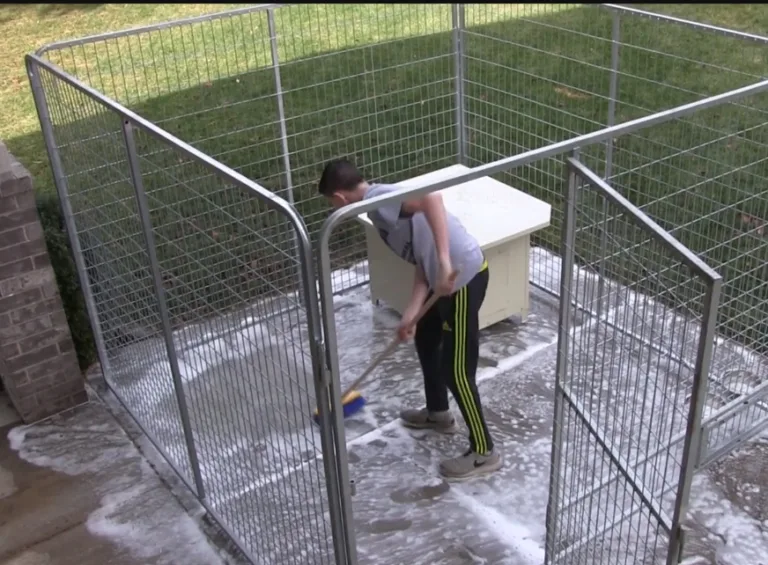
One Comment